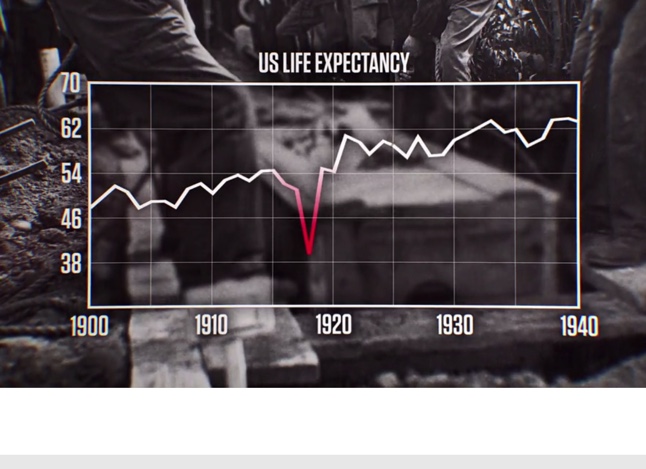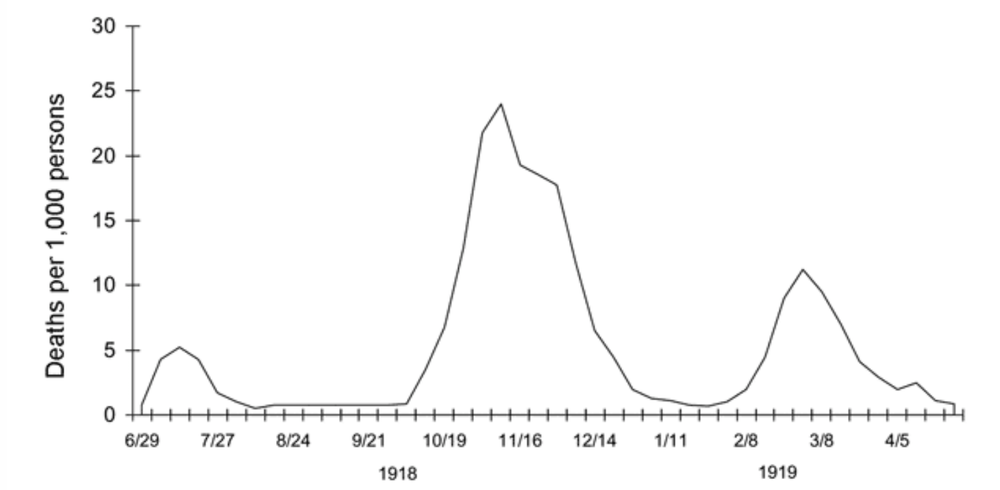
(click on heading to leave comments at bottom of page)
With an eye to the theme of this blog, “Pay attention to history or suffer the consequences”, it would be difficult not to look back at the Spanish Flu pandemic of 1918 to see if there are any lessons to be learned. Particularly so given the lack of leadership being displayed with deadly effect in the USA, Brazil, England and other countries.
Historians aren’t sure where the 1918 flu strain began, but the first case was at a U.S. Army camp in Kansas in March 1918. By the end of 1919, it had infected perhaps a third of the world’s population and killed some 50 million people. Perhaps it should have been called the American flu?
The adoption by Donald Trump and his acolytes of the term ‘China virus’ for political cover needs to be treated with caution. History may change that narrative.
The outbreak was exacerbated by censorship, scepticism and denial (sound familiar?) among warring nations. Being one of only a few major European countries to remain neutral during World War I, there were no wartime censors to suppress news of the flu in Spain so it first made headlines in Madrid in late-May 1918. Since citizens of nations at war could only read uncensored accounts from Spanish news sources, they assumed that this was the source of the virus.
Research so far would suggest that we should equally exercise caution in drawing comparisons with what to expect as this pandemic plays out because of key divergences in the social environment and political dynamics of 1918-19 as well as clear virologic differences between influenza and SARS-CoV-2 (the virus that causes COVID-19).
Influenza (e.g. the Spanish Flu) is unique in that its genetic material is organised in segmented chunks. This means that the virus can swap entire segments with other flu viruses, enabling rapid mutation. It is also much more virulent in colder months. This is why we have a new flu vaccine each year. However coronaviruses ‘proofread’ their copied genetic code to fix errors during replication. This substantially decreases mutation.
This relative stability of COVID-19 and our lack of data regarding its transmission in winter means that it would be premature to expect similar ‘waves’ of the virus as was experienced with the Spanish Flu.

The fixation on tamping down COVID-19 during the first wave to prepare us for the second and third wave may therefore be misplaced. The Spanish Flu evaporated after the final wave in the Spring of 1919 without a vaccine.
However, there is currently no reason to believe that the same will happen with COVID-19.
So are there any lessons to be learned? Well, in particular, because we live in an interconnected age (although, granted there was substantial movement of troops between North America, Europe and parts of the British Empire that contributed to spread of the Spanish flu) we should be even more serious about clamping down on social interaction – like the Spanish flu, this virus spreads by contact. Masks and social distancing are an imperative. The avoidance of crowds is the most basic of defences.
And, on a more strategic level, without a vaccine (and hopefully we will get one that works) it will take substantially more discipline, personal responsibility and above all, political leadership to bring this century’s first pandemic under control.
Information partially sourced from an article in the Conversation – research by Mari Webel Assistant Professor of History, University of Pittsburgh and Megan Culler Freeman Pediatric Infectious Diseases Fellow, University of Pittsburgh. https://theconversation.com/compare-the-flu-pandemic-of-1918-and-covid-19-with-caution-the-past-is-not-a-prediction-138895.
The post Spanish Flu vs COVID-19 A re-run? first appeared on David Cairns of Finavon.